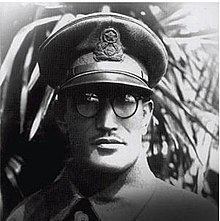Name Lee Beom-seok Role Prime minister | Spouse Kim Maria Succeeded by Shin Sung-mo | |
 | ||
Died May 11, 1972, Seoul, South Korea People also search for Kim Chwa-chin, Hong Beom-do, Otozo Yamada Allegiance Korean Empire, Republic of China, South Korea | ||
Lee Beom-seok (1900–1972) was a Korean independence activist and the first Prime Minister of South Korea from 1948 to 1950. He also headed the Young Pioneer Corps (조선민족청년단). His nickname was Chulgi.
Contents
Biography
Lee Beom-seok was born in Gyeongseong (now Seoul) on October 20, 1900. Lee's father was an officer in the Joseon Dynasty and he was a descendant of Sejong the Great's son 'Gwangpyeong Daegun (Hangul: 광평대군; Hanja: 廣平大君)'. Lee Beom-seok was exiled to the Republic of China after participating in independence activities as a teenager. In 1919, he started studying at the Shinheung military academy (Hangul: 신흥무관학교; Hanja: 新興武官學校), a military school whose goal was to build a new army to fight for independence. Soon after, Lee fought in the Battle of Cheongsanni, a six-day engagement in eastern Manchuria. He later served as a general in the Korean Liberation Army for the Provisional Government of the Republic of Korea.
In 1945, Lee attempted to return to Korea but was forced to remain in exile in China. In 1946, he returned to Korea and helped found the Korean National Youth Corps with Ahn Ho-sang. He was opposed to Kim Gu's South-North negotiations (Hangul: 남북협상; Hanja: 南北協商) and allied himself with Lee Syng-man to establish a unitary government in South Korea. He served as the new country's first prime minister from July 31, 1948 to April 20, 1950.
Later life and death
Following his term in office, Lee Beom-seok served as the Korean Ambassador to the Republic of China, and as Secretary of the Interior. He ran for the vice presidency in 1952, and again in 1956, but failed to win either election. Throughout the 1960s, he remained a staunch opposition leader to the ruling party. At the end of his career, Lee served as an adviser on the Board of National Unification(Hangul: 국토통일원; Hanja: 國土統一院) and mentored Park Chung-Hee as a Senator of the nation.
On May the 10th, 1972 he was granted a philosophy doctorate by the Taiwan Chinese Academy. The following day, May 11, he died of a myocardial infarction in the Seongmo hospital of Myeong-dong in Seoul. His state funeral was held in the Square of Namsan Mountain on May 17, and he was buried in Seoul National Cemetery.
